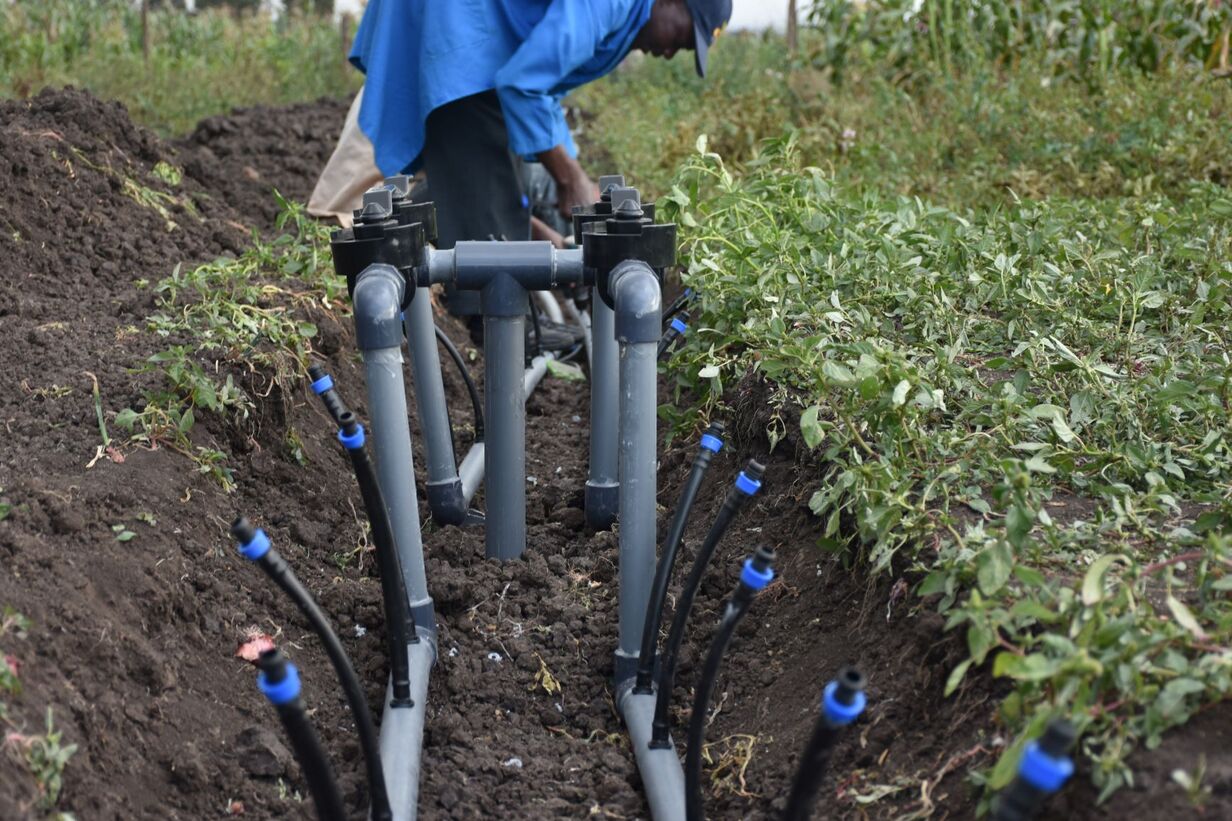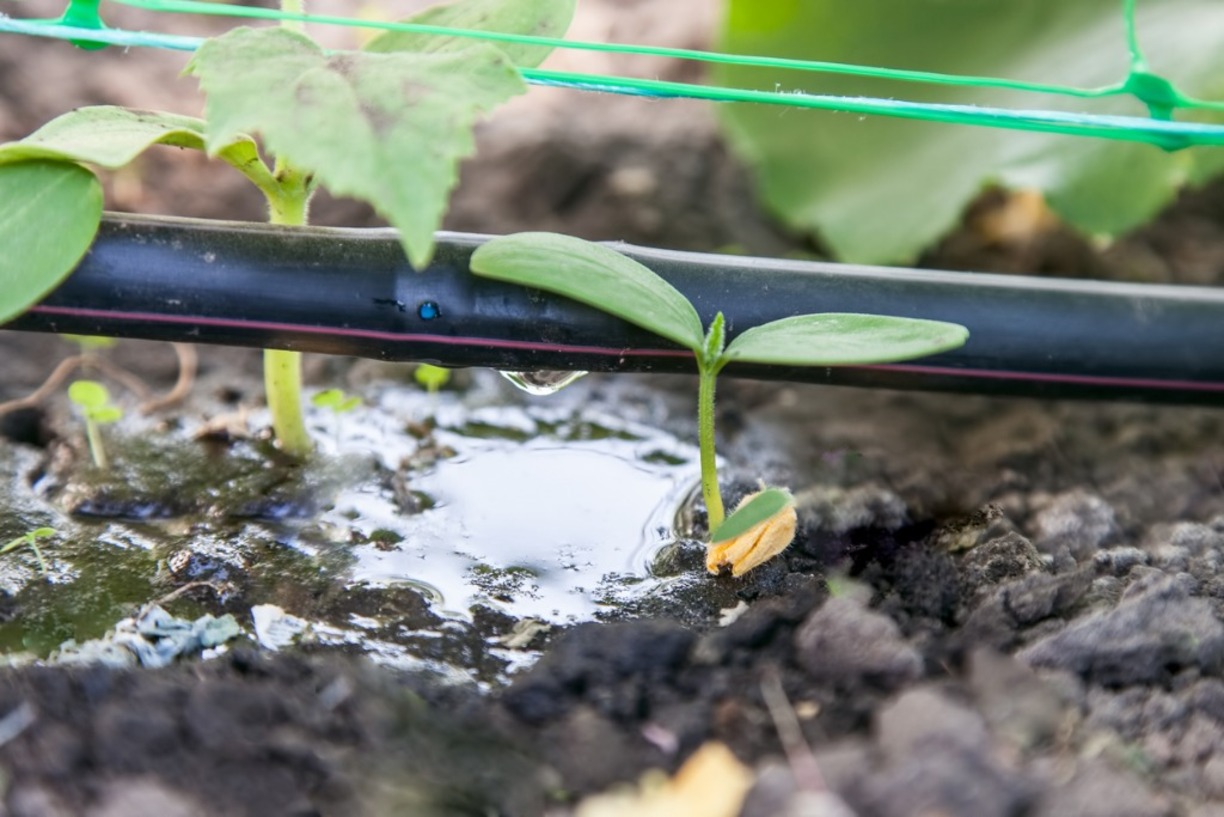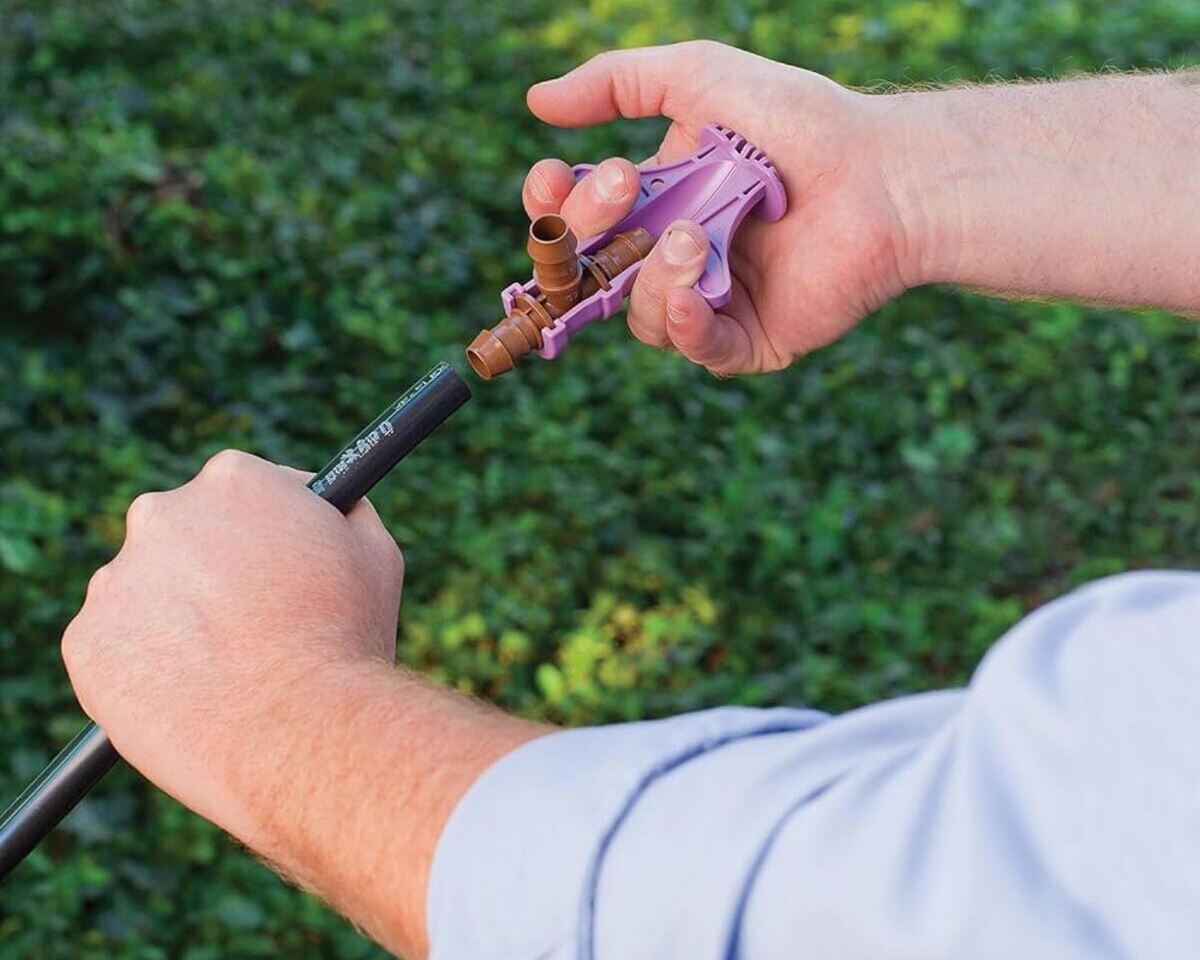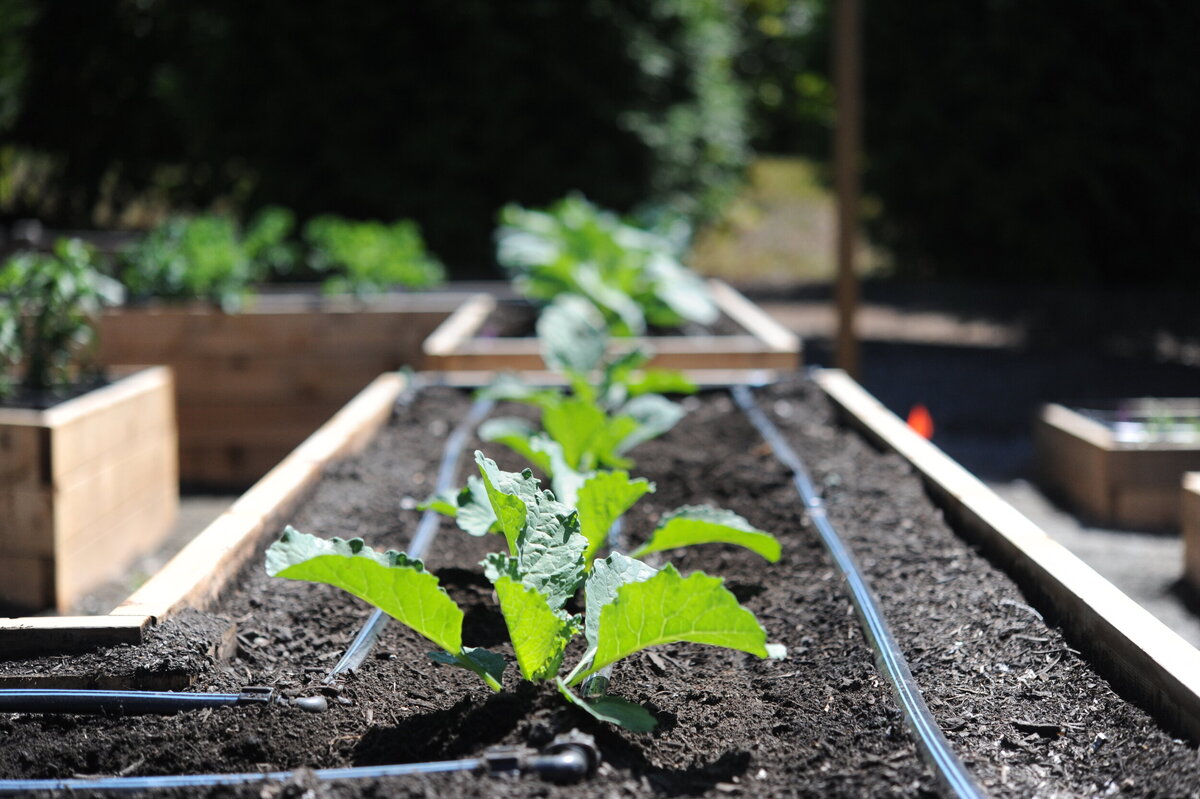Home>Gardening Techniques>DIY Projects>How Deep To Bury Drip Irrigation
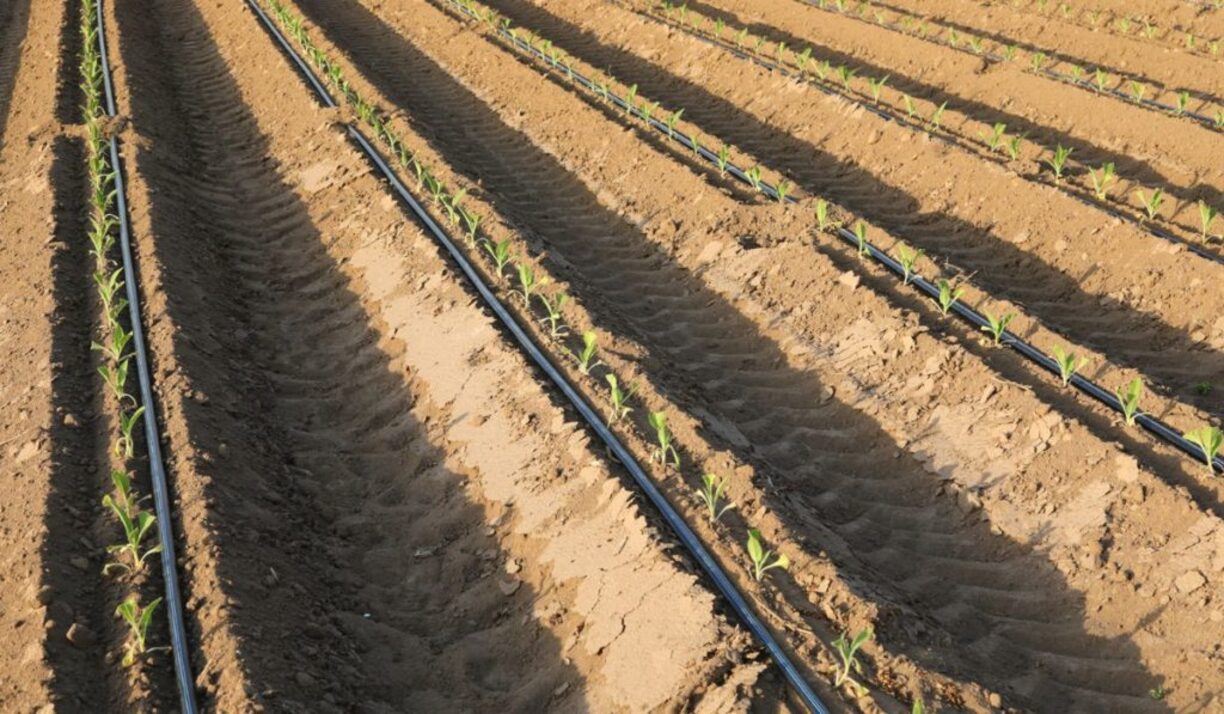

DIY Projects
How Deep To Bury Drip Irrigation
Modified: January 22, 2024
Learn how to bury drip irrigation systems for your DIY projects and achieve optimal watering efficiency.
(Many of the links in this article redirect to a specific reviewed product. Your purchase of these products through affiliate links helps to generate commission for Chicagolandgardening.com, at no extra cost. Learn more)
Table of Contents
- Introduction
- Understanding Drip Irrigation Systems
- Factors to Consider for Burying Drip Irrigation
- Recommended Depth for Burying Drip Irrigation
- Benefits and Drawbacks of Burying Drip Irrigation
- Installation Process for Burying Drip Irrigation
- Maintenance and Care for Buried Drip Irrigation Systems
- Conclusion
Introduction
When it comes to maintaining a lush and healthy garden, an efficient irrigation system is key. Drip irrigation systems have gained popularity among gardeners and homeowners as a cost-effective and water-efficient solution. Unlike traditional sprinkler systems, drip irrigation delivers water directly to the plant’s root system, minimizing water waste and promoting plant growth. While surface-level installation is common, burying drip irrigation systems can offer many benefits.
In this article, we will guide you through the process of burying drip irrigation and discuss the recommended depth, installation process, and maintenance requirements. By understanding these factors, you can make informed decisions to optimize the performance of your drip irrigation system.
Before diving into the specifics, it’s important to understand the basics of drip irrigation systems. These systems consist of a series of tubes and emitters placed strategically throughout the garden. Water is delivered slowly and directly to the plant’s root zone, ensuring that every drop is utilized. This targeted approach not only conserves water but also reduces the risk of diseases caused by prolonged leaf wetness.
Now, you might be wondering why you should consider burying your drip irrigation system instead of keeping it at the surface level. The answer lies in the numerous advantages that buried systems offer. By burying the tubes and emitters, you eliminate the risk of accidental damage from lawnmowers, foot traffic, or other factors. Additionally, burying the system can enhance the aesthetic appeal of your garden as the tubing and emitters remain hidden from view.
However, burying drip irrigation systems may not be suitable for every garden or situation. Factors such as soil type, plant types, and climate should be taken into consideration before making this decision. It’s also crucial to understand the various drawbacks and challenges associated with burying drip irrigation systems.
In the following sections, we will delve deeper into each aspect of burying drip irrigation systems, providing you with all the information you need to make an informed choice for your garden. So, let’s explore the recommended depth, installation process, and maintenance requirements for buried drip irrigation systems.
Understanding Drip Irrigation Systems
Before we discuss the process of burying drip irrigation systems, let’s take a closer look at how these systems work and why they are beneficial for your garden.
Drip irrigation is a method of watering plants by delivering water directly to the roots, drop by drop. This targeted approach provides several advantages over traditional sprinkler systems. Firstly, it minimizes water wastage by delivering water exactly where it’s needed, reducing evaporation and runoff. Secondly, it promotes healthier plant growth by preventing foliage wetting, which can lead to the development of fungal diseases.
A typical drip irrigation system consists of three main components: the water source, the tubing or drip lines, and the emitters. The water source can be a garden hose or a dedicated irrigation system connected to a water supply. The tubing or drip lines are the channels through which water is transported to the plants. These tubes are usually made of durable and flexible material like polyethylene and are designed to withstand UV rays, chemicals, and physical stress.
At specific intervals along the tubing, emitters are installed to release water. There are different types of emitters available, such as drip emitters, micro-sprinklers, and soaker hoses. The choice of emitter depends on factors like plant spacing, water requirements, and soil type.
When it comes to drip irrigation, precision is key. The amount of water delivered can be controlled by adjusting the flow rate and duration of irrigation. This flexibility allows you to tailor the watering schedule to the specific needs of different plants, ensuring optimal growth and health.
One of the significant advantages of drip irrigation systems is their ability to conserve water. According to studies, drip irrigation can save up to 50% more water compared to traditional sprinkler systems. This not only benefits the environment but also reduces water bills for homeowners and gardeners.
Moreover, drip irrigation systems can be easily automated by incorporating timers and sensors. These devices allow you to set specific watering schedules, ensuring that your plants receive water even when you’re away. This automation adds convenience and peace of mind to your gardening routine.
Now that you have a better understanding of how drip irrigation systems work and their benefits, let’s move on to the factors to consider when deciding to bury your drip irrigation system.
Factors to Consider for Burying Drip Irrigation
Burying drip irrigation systems can offer numerous benefits, but it’s essential to consider certain factors before making the decision. Understanding these factors will help determine if burying your drip irrigation system is the right choice for your garden.
1. Soil Type: The type of soil in your garden plays a significant role in determining the feasibility of burying your drip irrigation system. Sandy soils allow water to infiltrate easily, making burial simpler and more effective. However, clay soils have poor drainage and can cause water to pool, potentially leading to problems with buried irrigation lines. Conduct a soil test to assess its composition and drainage characteristics.
2. Plant Types: Different plants have varying water requirements and root structures. Consider the types of plants in your garden and their irrigation needs. Shallow-rooted plants may benefit more from surface-level irrigation, while deep-rooted plants can benefit from buried drip lines. Additionally, consider the spacing between plants and adjust the placement of buried drip lines accordingly.
3. Climate: The climate in your region can also influence the decision to bury your drip irrigation system. In hot and arid climates, burying the lines can help reduce water evaporation and keep the roots cool. However, in areas with heavy rainfall, burying the lines can increase the risk of clogging and drainage issues. Take into account the precipitation levels and average temperature when deciding to bury your drip irrigation system.
4. Accessibility: Consider the accessibility of your garden for maintenance and repairs. Burying the lines can make it more challenging to access and repair any potential issues. If your garden has complex or intricate landscaping, it may be more practical to keep the drip lines at the surface level to ensure ease of maintenance.
5. Future Landscaping Plans: Evaluate your future landscaping plans and any potential changes or additions to your garden. If you anticipate making significant changes or additions in the near future, it may be more practical to keep the drip lines at the surface level. This will allow for easier reconfiguration of the irrigation system to accommodate future changes.
By considering these factors, you can make an informed decision about whether burying your drip irrigation system aligns with the specific needs and conditions of your garden. Keep in mind that it’s essential to weigh the potential benefits against the challenges associated with burying the lines.
Recommended Depth for Burying Drip Irrigation
When it comes to burying your drip irrigation system, the depth at which you should bury the lines is a crucial consideration. The recommended depth will depend on various factors, including the type of plants, soil conditions, and climate. Here are some guidelines to help you determine the appropriate depth for burying your drip irrigation system.
1. Plant Root Depth: It’s important to ensure that the buried drip lines are placed at a depth that allows water to reach the root zone of your plants effectively. Consider the root depth of your plants and bury the lines accordingly. For shallow-rooted plants, a depth of 4-6 inches is generally sufficient. However, for deep-rooted plants, such as trees or shrubs, burying the lines at a depth of 8-12 inches may be more appropriate.
2. Soil Type and Drainage: The soil type and drainage characteristics of your garden can impact the depth at which you should bury your drip irrigation system. Sandy soils drain quickly and may require a slightly deeper burial to ensure water penetration. In contrast, clay or compacted soils may require a shallower burial to prevent pooling or waterlogging around the roots.
3. Climate and Evaporation: Consider the climate of your region and the rate of evaporation. In hot and arid climates, burying the drip lines slightly deeper can help to reduce water evaporation and keep the soil moist for longer periods. However, in cooler climates or areas with higher humidity, a shallower burial may suffice.
4. Frost Depth: If you live in an area where frost occurs during the winter months, it’s important to consider the frost depth when determining the depth for burying your drip irrigation system. The lines should be buried below the frost line to prevent damage from freezing temperatures.
5. Consider Surrounding Factors: Take into account any other factors that may impact the depth of the buried lines. For example, if you plan to add mulch or other materials to the topsoil, consider burying the lines slightly deeper to ensure adequate coverage and prevent exposure.
It’s important to note that these are general guidelines, and it’s recommended to consult with a professional or your local agricultural extension office for specific recommendations based on your garden’s unique conditions. They can provide valuable insight and guidance to help you determine the appropriate depth for burying your drip irrigation system.
By considering these factors and guidelines, you can ensure that your drip irrigation system is buried at the appropriate depth, allowing for optimal water delivery to the root zone of your plants.
Benefits and Drawbacks of Burying Drip Irrigation
Like any irrigation system, burying drip irrigation comes with both benefits and drawbacks. Understanding these advantages and challenges will help you weigh the decision and determine if burying your drip irrigation system is the right choice for your garden. Let’s explore the benefits and drawbacks of burying drip irrigation.
Benefits:
- Protection from Damage: One of the primary advantages of burying drip irrigation lines is that it offers protection from accidental damage caused by lawnmowers, foot traffic, or other factors. By burying the lines, you minimize the risk of damaging the tubing or emitters, ensuring the longevity and efficiency of your irrigation system.
- Aesthetic Appeal: Burying drip irrigation lines can enhance the aesthetic appeal of your garden. The tubes and emitters remain hidden from view, creating a cleaner and neater appearance. This can be particularly beneficial if you have a visually-oriented garden design or if you prefer a minimalist look.
- Water Conservation: Burying drip irrigation systems helps reduce water evaporation by delivering water directly to the root zone of plants. This focused irrigation method minimizes water waste, making it a more efficient and environmentally-friendly way to water your garden. Studies have shown that using drip irrigation can lead to significant water savings compared to traditional sprinkler systems.
- Reduced Weed Growth: Since water is delivered directly to the plants’ root zones, there is less moisture on the soil surface. This can help reduce weed growth since weeds thrive in moist conditions. Burying the drip lines can prevent water from reaching the weed seeds, creating a less hospitable environment for weeds.
- Flexibility and Customization: Drip irrigation systems offer a high level of flexibility and customization. When buried, the lines can be easily configured to match the layout and specific watering needs of your garden. Whether you have a large vegetable garden or a collection of potted plants, buried drip irrigation can be adapted to suit a variety of plant types and arrangements.
Drawbacks:
- Difficulty in Maintenance: Burying drip irrigation lines can make maintenance and repairs more challenging compared to surface-level systems. If issues arise, such as clogs or leaks, accessing and fixing them may require digging or disturbing the surrounding soil. Regular inspections and proactive maintenance can help minimize these challenges.
- Potential Clogging: Buried drip irrigation lines can be susceptible to clogging, especially in areas with high sediment or mineral content in the water. Sediment and debris can accumulate in the lines over time, leading to reduced water flow and potential damage to the emitters. Regular flushing and filtering the water supply can help prevent clogs.
- Cost and Installation: Burying drip irrigation lines may require additional time, effort, and resources compared to surface-level installation. The cost of materials, such as tubing, emitters, and connectors, may also increase. However, the long-term benefits and savings in water usage may offset these initial costs.
By considering these benefits and drawbacks, you can make an informed decision about whether burying your drip irrigation system aligns with your garden’s specific needs and your gardening preferences.
Installation Process for Burying Drip Irrigation
Once you have decided to bury your drip irrigation system, it’s essential to understand the installation process to ensure a successful and efficient setup. Below is a step-by-step guide to help you through the installation process:
1. Plan and Design: Start by planning and designing your buried drip irrigation system. Consider the layout of your garden, the type of plants, and their water requirements. Determine the optimal placement of the main water source, distribution lines, and emitters. Map out the irrigation zones and calculate the length of tubing and number of emitters needed.
2. Prepare the Area: Clear the area where you will be burying the drip lines. Remove any rocks, debris, or vegetation that may obstruct the installation. Ensure the soil is adequately prepared by loosening it to promote proper water penetration and drainage.
3. Lay the Main Line: Begin by laying the main line, which connects the water source to the different irrigation zones. Dig a trench wide and deep enough to accommodate the main line. Lay the tubing in the trench, ensuring it is properly aligned and leveled. Connect the main line to the water source and secure the tubing using stakes or clips, every few feet.
4. Install Distribution Lines: From the main line, extend distribution lines to each plant or irrigation zone. Dig smaller trenches for the distribution lines, ensuring they are positioned at the desired depth and spacing. Connect the distribution lines to the main line and secure them in place using stakes or clips.
5. Place Emitters: Install emitters along the distribution lines at the recommended spacing for your plants. Different types of emitters may have varying installation methods, so follow the manufacturer’s instructions. Make sure the emitters are securely attached and positioned near the plants’ root zones.
6. Test and Adjust: Before burying the drip lines, it’s important to test the system for any leaks, clogs, or misalignments. Turn on the water supply and inspect the system to ensure proper water flow and coverage. Make any necessary adjustments or repairs before proceeding to the next step.
7. Bury the Lines: Once the system has been tested and adjusted, carefully backfill the trenches to bury the drip lines at the desired depth. Ensure the lines are properly covered with soil, leaving only the emitters visible aboveground. Take care not to damage the lines or disturb their alignment during this process.
8. Mulch and Protect: After burying the lines, apply a layer of organic mulch to help conserve moisture, control weed growth, and protect the buried lines. Avoid placing mulch directly on top of the emitters to ensure proper water distribution.
9. Monitor and Maintain: Regularly monitor your buried drip irrigation system for any issues or adjustments needed. Check for leaks, clogs, or uneven water distribution. Perform routine maintenance tasks such as flushing the system and replacing worn-out emitters or connectors.
Following these steps will help you successfully install a buried drip irrigation system in your garden. Remember to consult manufacturer guidelines and seek professional advice when needed to ensure the best results for your specific garden and plant requirements.
Maintenance and Care for Buried Drip Irrigation Systems
Maintaining your buried drip irrigation system is essential to ensure its proper functioning and longevity. Regular maintenance and care will help prevent issues such as clogging, leaks, or uneven water distribution. Here are some key maintenance tasks to keep your buried drip irrigation system in excellent condition:
1. Regular Inspections: Regularly inspect your buried drip irrigation system to check for any visible issues or potential problems. Look for leaks, damaged tubing, or clogged emitters. Inspect the connections and fittings to ensure they are secure and tightly sealed.
2. Flushing the System: Flushing the drip irrigation system is crucial to remove any sediment, debris, or particles that may accumulate over time and cause clogging. Flush the system at regular intervals, especially if you notice reduced water flow or uneven water distribution. Utilize a flushing device or remove the end cap to flush the lines manually.
3. Check for Clogs: Even with regular flushing, clogs may still occur in the emitters or distribution lines. Inspect the emitters to ensure they are clean and not obstructed. If you notice reduced water flow in certain areas, remove and clean the emitters, or replace them if necessary.
4. Check Water Pressure: Monitor the water pressure of your buried drip irrigation system to ensure it falls within the recommended range. Excessive pressure can cause damage to the emitters or create leaks. Use a pressure gauge to measure the water pressure periodically and adjust it if necessary.
5. Adjust for Plant Growth: As your plants grow, their water requirements may change. Regularly assess and adjust the placement of the emitters to ensure they deliver water directly to the root zones of the plants. Move or add emitters as needed to accommodate the changing needs of your garden.
6. Maintain Mulch: If you have added mulch to your garden beds, periodically check and maintain the mulch layer. Ensure that the mulch is not obstructing the emitters and preventing proper water distribution. Make adjustments to the mulch layer as needed to ensure it remains beneficial for the irrigation system.
7. Winterization: Proper winterization is essential to protect your buried drip irrigation system during freezing temperatures. Before the onset of winter, drain the system to remove any excess water and disconnect the water supply. Insulate or bury the lines deeper to protect them from frost or extreme cold.
8. Schedule Routine Maintenance: Set up a routine maintenance schedule for your buried drip irrigation system. This includes periodic inspections, flushing, and checking for leaks or clogs. By staying consistent with maintenance tasks, you can detect and resolve issues before they escalate.
By following these maintenance practices, you can ensure the longevity and optimal performance of your buried drip irrigation system. Regular inspections, flushing, and adjustments will help keep your system running smoothly, resulting in healthy, vibrant plants and efficient water usage in your garden.
Conclusion
Burying a drip irrigation system can be a practical and efficient way to water your garden, providing numerous benefits such as protection from damage, improved aesthetic appeal, water conservation, and reduced weed growth. However, it’s important to consider factors like soil type, plant types, climate, and accessibility before deciding to bury your system.
When burying your drip irrigation system, always follow the recommended depth guidelines based on factors like plant root depth, soil type, and climate. This ensures optimal water delivery to the root zone of your plants. The installation process involves careful planning, laying the main line, installing distribution lines and emitters, and thorough testing before burying the lines and adding mulch for protection.
Maintaining and caring for a buried drip irrigation system is crucial for its proper functioning. Regular inspections, flushing the system, checking for clogs and water pressure, adjusting for plant growth, and routine maintenance tasks are essential to keep the system in excellent condition and ensure optimal water usage efficiency.
In conclusion, burying a drip irrigation system can be a wise investment for your garden. It offers numerous benefits, including efficient water usage, protection from damage, and enhanced aesthetic appeal. By considering the factors, properly installing the system, and maintaining it throughout the year, you can enjoy the convenience, water savings, and healthier plants that a buried drip irrigation system provides.


